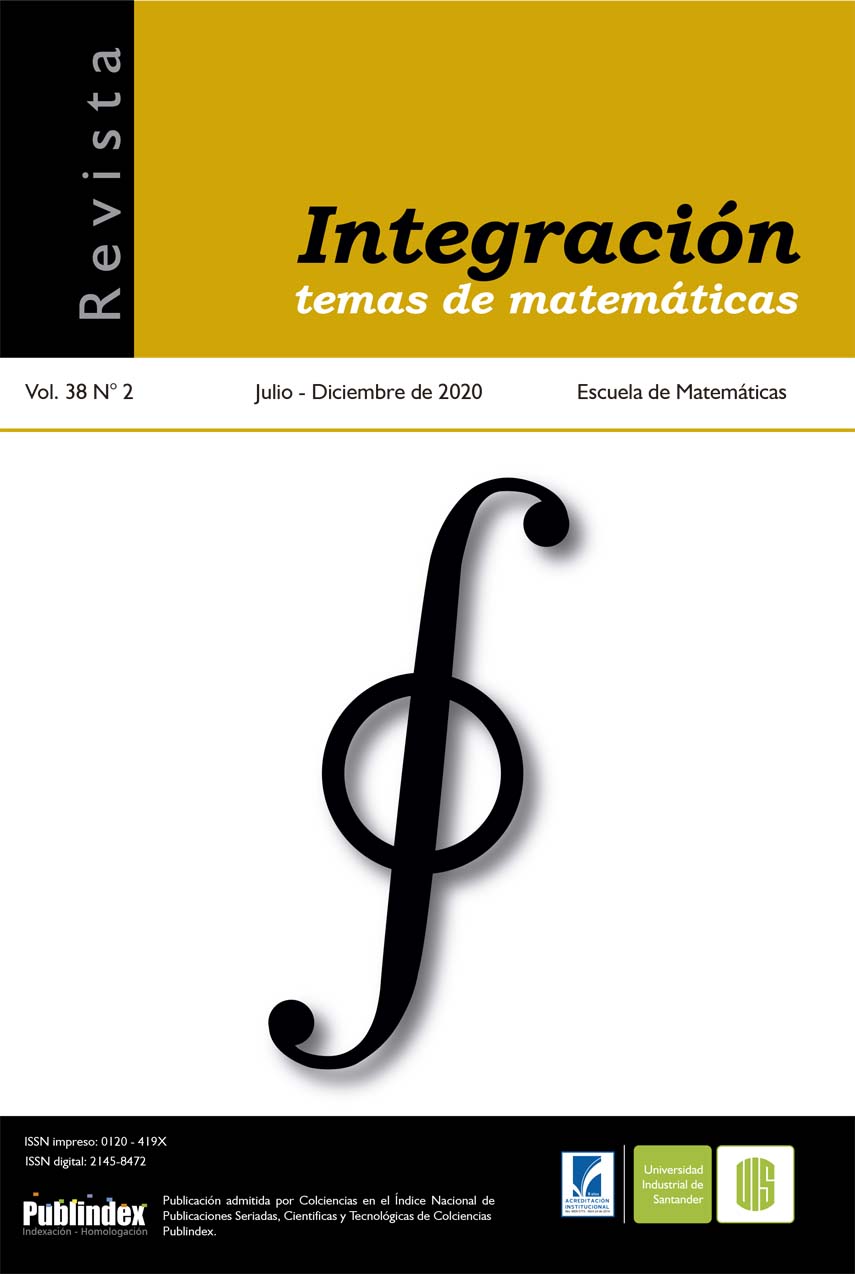Periodic solutions for a model of cell population subjected to general periodic radiation
Published 2021-05-29
Keywords
- Modelos de tratamiento contra el cáncer,
- sistemas cooperativos,
- órbitas periódicas,
- radiación
How to Cite
Copyright (c) 2020 Homero Díaz-Marín, Carlos Osvaldo Osuna Castro

This work is licensed under a Creative Commons Attribution 4.0 International License.
Abstract
En este trabajo consideramos modelos con tratamiento de radiaciónperiódico contra el cáncer que describen la dinámica de las poblaciones celulares en un tumor. Establecemos la existencia de órbitas periódicas, utilizandola teoría de los sistemas cooperativos. Damos condiciones suficientes parala unicidad de la solución periódica, también para que esta sea un atractorglobal. Realizamos simulaciones numéricas utilizando funciones de radiaciónespecíficas para ilustrar nuestros resultados analíticos.
Downloads
References
Hall E.J. and Giaccia A.J.Radiobiology for the Radiologists, Lippincott Williams & Wilkins(LWW), Philadelphia, 2018.
Freedman H. I. and Pinho S. T. R., Persistence and extinction in a mathematical model of cell populations affected by radiation, Period. Math. Hungar., 56 (2008), 2535. doi:10.1007/s10998-008-5025-2.
Gámez M., et. al., “Observation and control in a model of a cell population affected byradiation”,BioSystems96 (2009), No. 2, 172-177. doi: 10.1016/j.biosystems.2009.01.004.
Greider B.W., Kallman R.F. and Franko A.J, “Recruitment of noncycling tumor Cells into Proliferation by Isoproterenol”, Cancer Research, 43 (1983), No. 4, 1501-1503.
Korman P., “A periodic model for the dynamics of cell volume”, Annales Polonici Mathe-matici, 116 (2016), 243-249. doi: 10.4064/ap3857-3-2016.
Liu Z., et. al., “Permanence, extinction and periodic solutions in a mathematical model ofcell populations affected by periodic radiation”, Applied Mathematics Letters, 24 (2011), No. 10, 1745-1750.
Smith H., Monotone dynamical systems: an introduction to the theory of competitive and cooperative systems, Math. Surveys Monogr., Arizona, 1995. doi: 10.1016/S1874-5725(05)80006-9
Wallace D.I. and Guo X., “Properties of tumor spheroid growth exhibited by simple mathematical models”, Front Oncol, 3 (2013). doi: 10.3389/fonc.2013.00051.
Watanabe Y., et. al., “A mathematical model of tumor growth and its response to single irradiation”, Theoretical Biology and Medical Modeling, 13 (2016). doi: 10.1186/s12976-016-0032-7.
